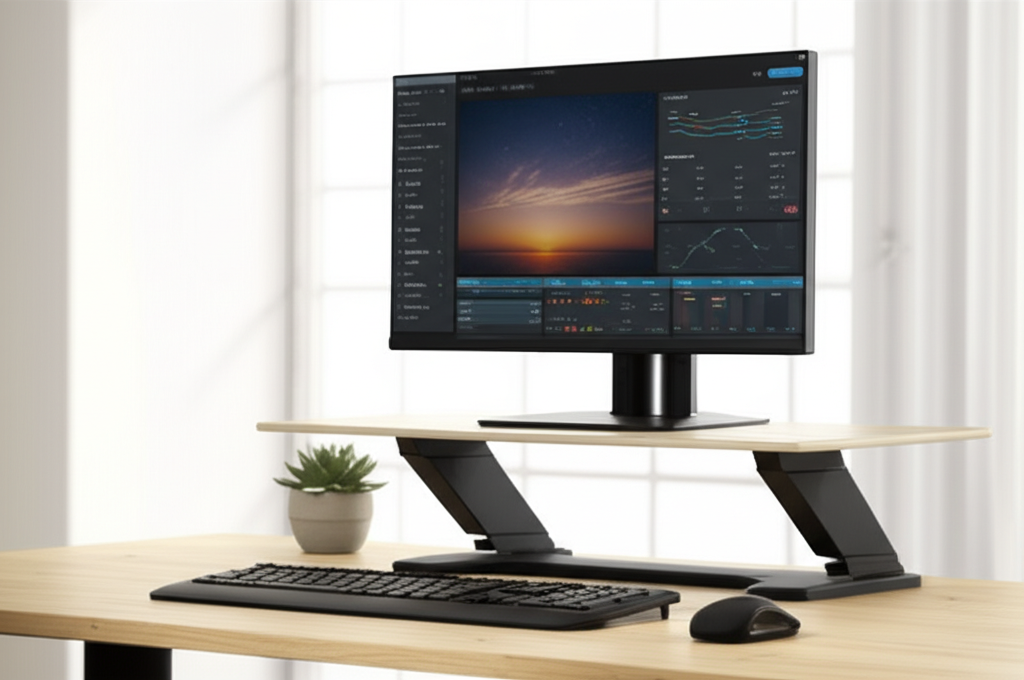Does Elevating Your Monitor Help With Brain Fog?

If you spend hours a day at a desk, you've likely experienced neck pain or eye strain. But could your desk setup also be contributing to brain fog? The surprising answer is yes, and it has a lot to do with your posture.
The Posture-Cognition Connection
When your monitor is too low, you naturally hunch forward, craning your neck down to see the screen. This 'tech neck' posture does more than just strain your muscles; it can impact your brain.
1. Reduced Blood Flow
Poor posture, particularly a forward head position, can compress blood vessels in your neck. This can restrict blood flow to the brain, reducing the supply of oxygen and essential nutrients needed for optimal cognitive function. The result can be a feeling of mental sluggishness and difficulty concentrating.
2. Strained Breathing
Hunching over compresses your diaphragm, leading to shallower breathing. As we've discussed before, reduced oxygen intake is a direct contributor to brain fog. Proper posture opens up the chest cavity, allowing for deeper, more efficient breaths.
3. The Pain-Distraction Link
Chronic neck and shoulder pain is a significant cognitive drain. Your brain has to dedicate resources to processing these pain signals, leaving less mental energy available for focus, problem-solving, and creative thinking. The pain itself is a constant, low-level distraction.
The Simple Fix: Elevate Your Monitor
The solution is simple ergonomics. Your monitor should be positioned so that the top of the screen is at or slightly below eye level. This encourages you to sit up straight, with your head balanced naturally over your shoulders.
How to achieve this:
- Use a monitor stand or a stack of books.
- If using a laptop, invest in a laptop stand and an external keyboard and mouse.
- Ensure your chair provides good lumbar support to help maintain an upright posture.
By making this simple adjustment, you can improve blood flow, breathe more deeply, and reduce pain-related distractions. It's a small change that can make a big difference in clearing the fog and sharpening your focus throughout the workday.